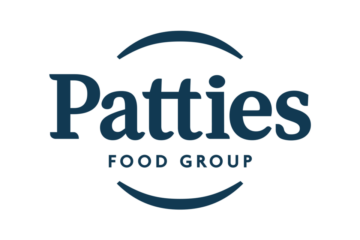By Dr Nonja Peters
In Milk and Honey – But No Gold, Dr Nonja Peters provides one of the most comprehensive accounts of postwar migration to Western Australia, with a particular focus on the Dutch and other European migrant communities. Based on archival research, oral history interviews, and personal observation, Peters explores the myth versus reality of the migration journey, the promises made by governments, and the lived experiences of the migrants themselves.
Key Themes:
1. The Migration Dream vs Harsh Reality
Many Dutch and other European migrants were drawn to Australia by images of prosperity—open landscapes, employment, home ownership, and personal freedom. Government propaganda painted Australia as a land of “milk and honey.” However, what many migrants encountered were shortages, language barriers, poor housing conditions, and harsh physical labour, often in isolated or underdeveloped regions.
2. Assisted Passage and Government Objectives
The book analyses how the Australian government sought migrants not just to boost population but to fill labour shortages in essential industries. The Netherlands was considered an ideal source of migrants—white, Christian, disciplined, and relatively well-educated. Many Dutch migrants came under the Assisted Passage Scheme and were quickly absorbed into the workforce, but often at a personal and cultural cost.
3. Experiences of Dislocation and Cultural Adaptation
Peters highlights the psychological and emotional toll of migration: the dislocation of leaving extended family, feelings of cultural alienation, and the loss of social status. Dutch migrants, despite being linguistically close to English speakers, found Australian society disinterested in their culture. There was often pressure to assimilate quickly, reinforced by policies that discouraged ethnic enclaves or cultural expression.
4. Community Formation and Resistance to Assimilation
Despite assimilationist pressures, Dutch migrants established a variety of social clubs, sporting groups, churches, and language schools. These institutions became crucial for cultural maintenance and identity reinforcement. Peters gives special attention to the creation of Dutch-run businesses and cooperative societies, particularly in Perth and Fremantle.
5. Women’s Roles in Migration
A particularly valuable aspect of Peters’ work is the attention she gives to migrant women. She explores how women were expected to be homemakers, raise families, and support the migration effort, often with limited support networks and restricted economic participation. Many women experienced profound loneliness and isolation, yet also served as the bedrock of community cohesion.
6. Legacy and Intergenerational Identity
The final sections reflect on the outcomes of this migration wave. Many Dutch migrants successfully built new lives and contributed meaningfully to Australian society, but their culture was often under-recognised. Second-generation Dutch-Australians sometimes reclaimed their heritage later in life, though often without language proficiency. Peters argues that while assimilation succeeded materially, it came at a cultural cost.
For more info see University of Western Australian.
Author Biography: Dr Nonja Peters
Background and Early Life
Nonja Yvonne Huberta Maria Peters was born in the Netherlands in 1944 and migrated with her family to Western Australia in 1949. Raised in a migrant family in Toodyay and later Northam, Peters’ early life experiences profoundly shaped her academic focus on identity, belonging, and migration.
Education and Academic Career
Peters began her formal education later in life, eventually earning her PhD in Anthropology at the University of Western Australia in 2000. Her thesis examined the intersection of ethnicity, economy, and migration in migrant communities in WA, setting the foundation for a distinguished career in migration studies.
She has held academic positions at Curtin University and Edith Cowan University, and has served as a Visiting Fellow at the Australian National University and at various European institutions.
Scholarship and Major Works
Dr Peters is best known for her ethnographic and historical work on Dutch and broader European postwar migration. Her major publications include:
- Milk and Honey – But No Gold: Postwar Migration to Western Australia 1945–1964
- The Dutch Down Under 1606–2006
- From Tyranny to Freedom: Dutch Children from the Netherlands East Indies to Fairbridge Farm School 1945–1946
- Depok: De droom van Cornelis Chastelein (in Dutch)
She also contributed to museum catalogues, policy reports, and oral history projects, helping to shape public memory and awareness of Australia’s migration history.
Curation and Advocacy
Peters is a recognised curator, having developed significant exhibitions such as A New Australia: Postwar Migration to Western Australia, and A Sense of Place: Postwar Migration to Northam. These exhibitions blended personal stories, visual archives, and scholarly narrative to reach a broad public audience.
She has been instrumental in the establishment and development of Dutch heritage organisations in Australia and served as an advisor to multicultural institutions and community services.
Recognition
In 2022, Peters was inducted into the Western Australian Women’s Hall of Fame for her pioneering work in migration studies and her advocacy for migrant communities.
